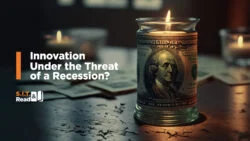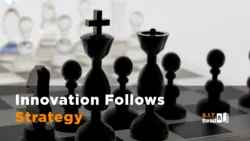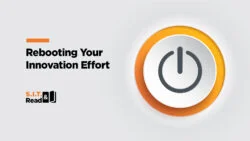Innovating with nothing but water around you
I love movies and I love innovation. But even I was shocked when I learned that someone who shares my feelings was willing to pay USD 85,000 for a unique volleyball that appeared on the big screen.
A few weeks ago, Wilson, an off-white leather ball which is best known for co-starring alongside Tom Hanks in “Cast Away” was sold for that sum.
In the film, FedEx trouble shooter Chuck Noland, played by Hanks, is forced by extreme conditions to survive on a deserted island for 4 years, relying only on the limited resources found around him.
Wilson, in the movie context, is not just a ball. Chuck needs to find a solution to his solitude, sense of aloneness. Almost accidently, he “creates” a companion out of a simple blood-stained volleyball, by adding a face to it. This seemingly casual action changed the ball’s essence.

Wilson the volleyball from “Cast Away”
Why is this scene relevant for us? And what can we learn from it? I will use this Hollywood story to explain two principles of innovation that you can implement in your business, even if you are not completely surrounded by water.
How do we usually innovate?
All around us we can spot and specify needs and problems. We can usually identify and articulate our pains: What do we lack? What action do we want to perform, or do we wish to be performed? Then, we tend to look for a tool, a product or a person that best suits our needs.
What if there is not even one object around that supports these needs? In such cases we may try to build or invent one.
We usually move from a perceived function to the object that can perform it. We practice this standard way of thinking not only in our private lives, but also as a part of organizational and business routines. We define “A job to be done” and look for the right tool to do the job!
The term “Form Follows Function”, which encapsulates this way of thinking, was coined by the architect Louis Sullivan at the end of the 19th century. Sullivan was known as the “Father of Modernism”, influencing generations of architects and designers. He referred to the fact that a building or an object should primarily relate to its intended function or purpose, even at the expense of its aesthetics…
A deserted island is actually a Closed World
But survivors on lost islands do not experience regular conditions. You can ask Daniel Defoe’s Robinson Crusoe, the most famous fictional castaway who spent 28 years on a remote tropical island. Your resources are scarce, and you must make the best of what can be found in your immediate surroundings, your Closed World. This is the first principle of innovation to be learned from this story.
In the 2000 drama film Cast Away, Chuck Noland is on his way to Malaysia when his cargo plane gets caught in a violent storm and crashes into the Pacific Ocean. Noland is the only survivor of the crash, and he washes up on an uninhabited island.
In his new home Noland finds his standard way of thinking useless. He carefully examines the objects around him – the content of some FedEx packages washed up on the shore – only to find out that their original function is no longer needed. After all, what good can skating shoes bring when you’re the only resident of your wild sandy hot kingdom?
Think differently, embrace your constraints
If you find yourself on such a deserted island, the first things you will probably look for are food, water, and shelter. Chuck Noland did just that, utilizing everything he could lay his hands on.
He began improvising. Not only did he find new functions for the objects he found on the island, but these new functions seem much more innovative than what he originally imagined.
For us it comes as no surprise since we believe in SIT that Constraints Foster Creativity. Nothing like a remote island to illustrate constraints. Noland learned this second principle of innovation quickly.
Got some dry branches? Great! Rubbing them can help start a fire. That’s easy.
How about the skating shoes blades? Looks like the perfect knife.
Some video cassettes that seemed of no value were the source of a strong rope, weaved from the tape inside them.
The plastic walls of portable toilets? They were turned into a sail and a shield for the raft Noland built.
And Wilson!
At first glance, the volleyball seemed redundant and was thrown aside. Only later a latent need was discovered. Noland, desperate to talk to someone, personified the volleyball, making him his closest friend. He drew a face on the bloodstained ball, enabling it to become much more than a sport appliance for years to come.
This innovative way of thinking might sound strange or even childish, but that is just the point. Most people use the standard way of innovating that I described before; Nevertheless, I would like to suggest a different approach: start with the form of the object, then look for new functionalities it may support.
This phenomenon was discovered by a group of psychologists led by Ronald Finke, and it spurred a new thinking approach.
In SIT terms, this is called Function Follows Form or FFF for short. This counterintuitive yet powerful process allows us to discover new benefits that we might miss by following our usual path of thinking.
We like improvising, creating new ideas out of imagined situations or objects, so why wait until we find ourselves on an island?
Come back next week to see how you can recognize outcomes of the FFF framework in surprising places.








